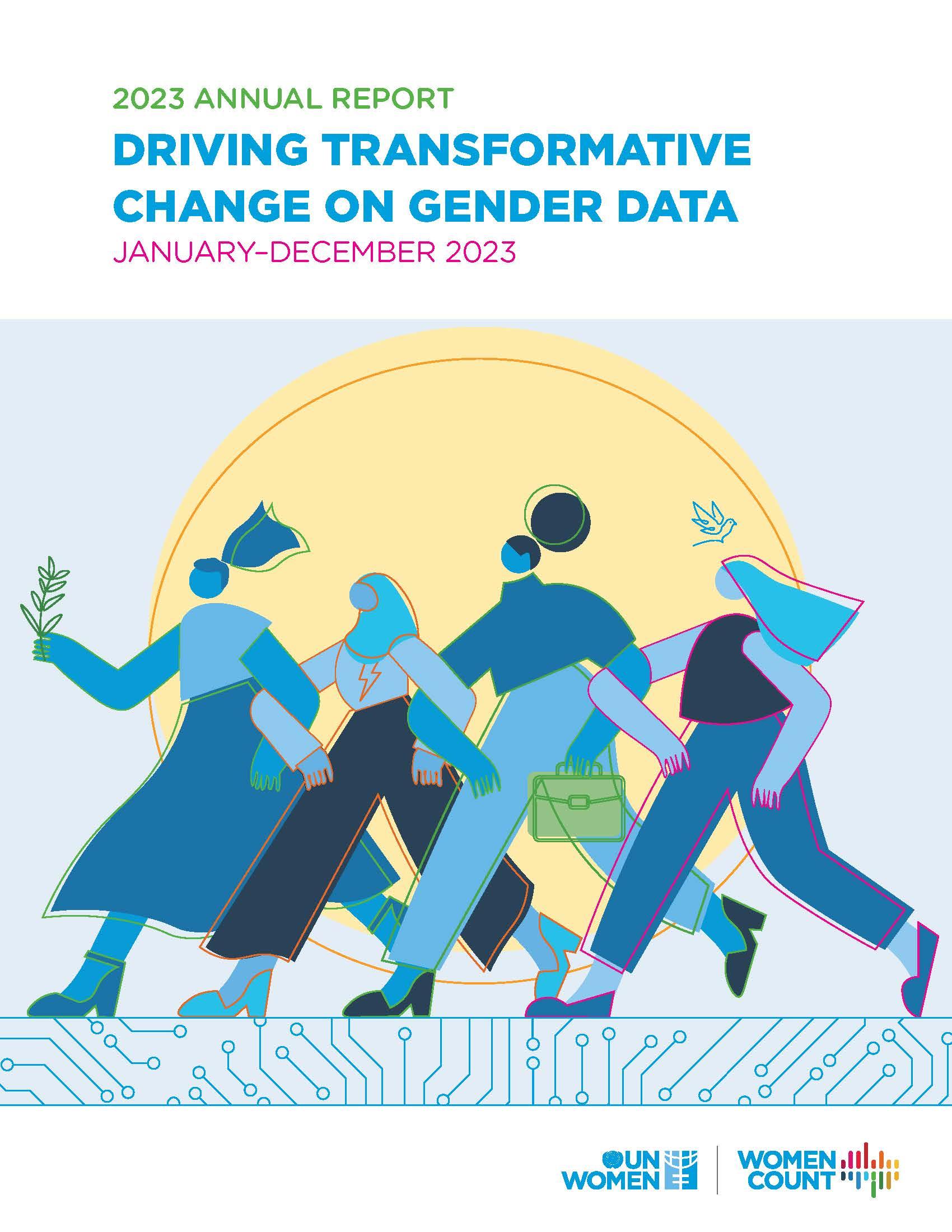Back to Publications


Women Count annual report 2023
Women Count Phase II (2022-2025) aims to sustain the important gains achieved under Phase I and continue to strengthen investments in gender data that contribute to global efforts to accelerate progress towards the SDGs by 2030. In 2023, the second year of Phase II, these investments have continued to yield positive results. This annual report highlights the successes as a result of this second phase, such as:
- SDG gender data availability is steadily increasing globally. 56% of gender-specific indicators can be reliably monitored (up from 26% in 2016). On average, 8 Women Count countries now have 68% of SDG gender data available, 12 percentage points above the global average, demonstrating a clear added value of the programme.
- Regional coordination on gender statistics has improved significantly. ASEAN’s first coordination mechanism for accelerating the production of gender statistics across Asia-Pacific has been established, which will enable a gender-responsive implementation of the ASEAN Community Vision 2025 and improve the monitoring of the SDGs.
- Gender data have been used to inform at least 21 policies and programmes to spur gender-responsive action on ending violence against women, women’s economic empowerment, humanitarian efforts, or disaster mitigation. For example, data on women’s economic empowerment have informed the first National Care Policy of Kenya; time-use data have led to increased paternity leave in Georgia; data are being used to increase girls’ minimum legal age for marriage in Tanzania and include sexual harassment policies in the workplace in Uganda’s employment laws.
- 13 countries have integrated gender in their National Strategy for the Development of Statistics, improving the capacity of their National Statistical Systems to coordinate, produce and use gender statistics.
